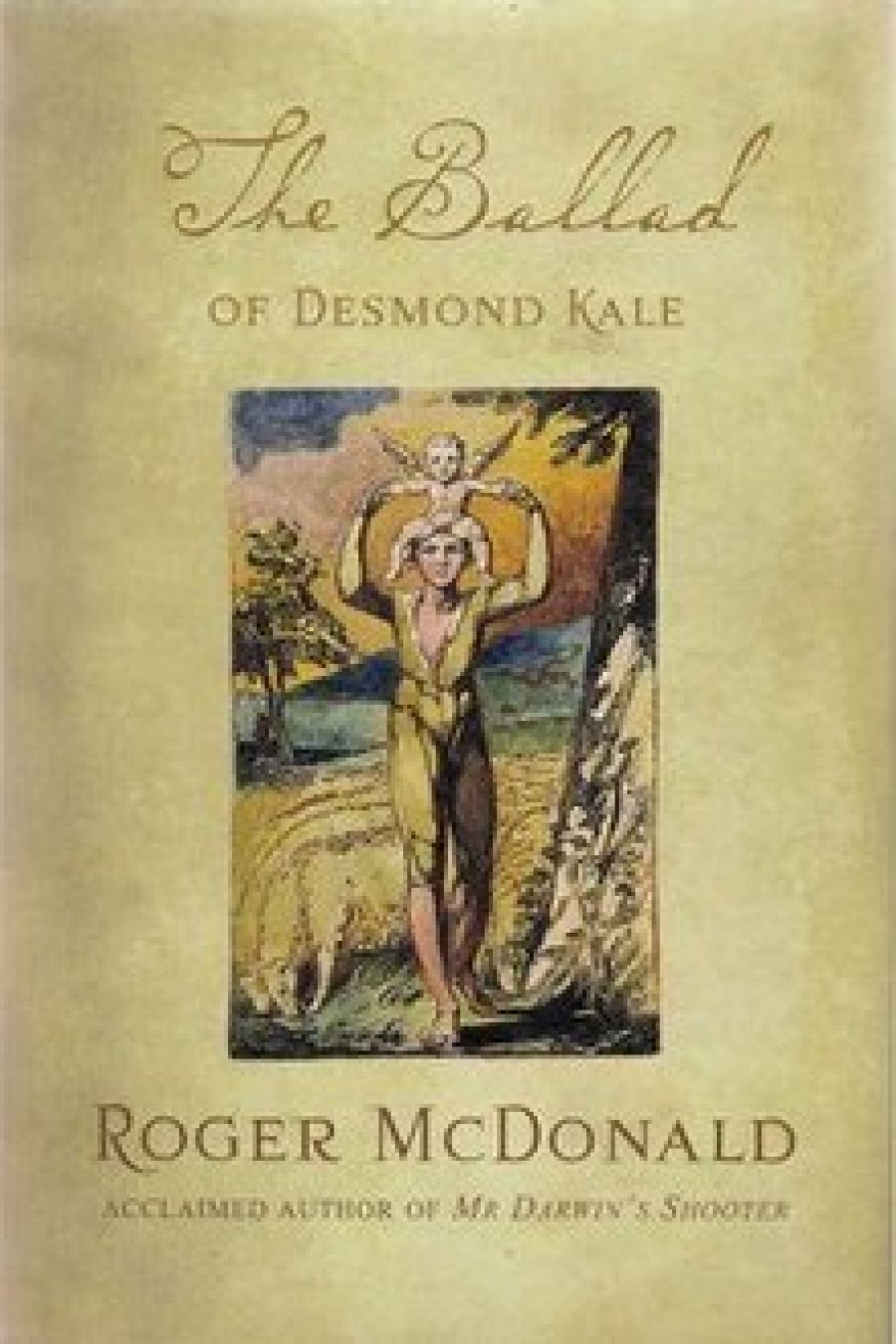
- Free Article: No
- Contents Category: Fiction
- Custom Article Title: A woolly romp
- Review Article: Yes
- Article Title: A woolly romp
- Online Only: No
- Custom Highlight Text:
How much do you care about sheep? I mean really care about sheep. Because The Ballad of Desmond Kale is up to its woolly neck in them. It’s an unusual and inspired variation on the classic Australian colonial novel of hunters for fortune, for identity and for redemption. The historical record is filled with accounts of early settlers grappling with the hostile and unpleasant environment. The battle to tame the distinctly un-European landscape has been a recurring theme in Australian literature ever since. As a consequence, the physical landscape has been mythologised. Here, the rhetoric goes, we might find ourselves. The bush and the outback are awarded a spiritual quality. If we can understand this, be at one with the space that was formerly so hostile to us, then maybe we can understand what it means to be Australian.
- Book 1 Title: The Ballad Of Desmond Kale
- Book 1 Biblio: Vintage, $32.95 pb, 638 pp, 1741661145
- Book 1 Cover Small (400 x 600):

- Book 1 Cover (800 x 1200):

But Kale escapes, and disappears. Before long, whispers come drifting through the young township: whispers of success further south, further inland, beyond the recognised territory of Sydney. Somewhere out there, in the implacable bush, Desmond Kale is prospering. And Matthew Stanton is no longer producing the finest wool in the colonies. With his vivid recreation (and subversion) of a familiar literary setting, Roger McDonald demonstrates just how comfortable he is with the big-picture historical novel, moving effortlessly from Australia to England, from bushranging to Spanish battlefields. This is thrilling entertainment; a massive soap opera, skilfully written, funny, compassionate. But this is one ballad that could do with one or two fewer verses.
The novel certainly has the feel (and length) of a major historical epic. Several generations of several families, love and betrayal, loyalty and longing. And sheep. Always back to the sheep. The value of the wool, the virtues of the merinos, the ins and outs of producing the best wool in the colonies. It is all well done, but there’s a reason people count the things to get to sleep. This is hardly the stuff of a page-turner. Maybe that’s unfair – perhaps there’s more than pot-boiling going on. As Stanton notes: ‘There was never any place in the world where a sheep was so keenly sought after improving, with so little knowledge of the art in doing so.’ Is this an intimate history told on a grand scale or a grand history told on an intimate one? Historical fiction can rarely, if ever, escape being read allegorically. The key themes – familiar ones – are of redemption and salvation; for both the ragtag bunch of characters and for New South Wales itself. How might this burgeoning society improve itself? Through the punctiliousness and self-serving of its Matthew Stantons, or through the pioneering and fiercely independent spirit of its Desmond Kales?
It is clear which model McDonald favours. There aren’t many shades of grey here at all. The divide between heroes and villains is part of what makes this grand colonial novel such a fun read, and the narrative is driven by the largely pure aspirations of its goodies – love, wool, security, wool, freedom and wool – and the malevolent intent of its baddies – money, wool, power, wool, revenge. But in many respects this grand novel of colonial life gets bogged down in the tropes and conventions that underpin and constrain the genre. The Irish are anti-establishment, at times fey, by turns wise and irreverent. Joe Johnson, the Jewish merchant, is both even-handed and a canny operator. The women are staunch and beautiful, feisty and defiant.
Luckily, McDonald is too good a writer to rely on stereotypes for his characterisation. Matthew Stanton is a terrific character who might just have walked straight out of a Marcus Clarke novel. His adoptions, first of an Aboriginal boy called Titus and then, in a Machiavellian manoeuvre, of Kale’s grandson Warren Inchcape, point to the peculiar nature of his evangelical zeal, his ideas about rehabilitating the forsaken mixing in with his own greed. He is a man of fervour, of beliefs and drives, the sort who may have gone astray no matter what, but in the unforgiving environs of colonial Australia, he is doomed to corruption and disappointment. In contrast, the Kale of myth and ballad, who so exercises Stanton’s rage and imagination, is far more interesting than the actual man. In Kale’s camp, Ugly Tom Rankine is the better developed, more interesting character. And the various children populating the novel are fantastic.
This is a big book that spends a little too long luxuriating in the fun of its grandeurs and at points fails to sustain its narrative drive. The big historical novels that it seems to be emulating have a much clearer sense of focus and of forward momentum. But McDonald does embrace adventure, and at its best, with betrayals and love, shipwrecks and double-crosses, this is a rollicking good read. The writing is beautiful, too; funny and energetic, grand and intimate. The Ballad of Desmond Kale is enjoyable, even if it is a little woolly around the edges.


Comments powered by CComment